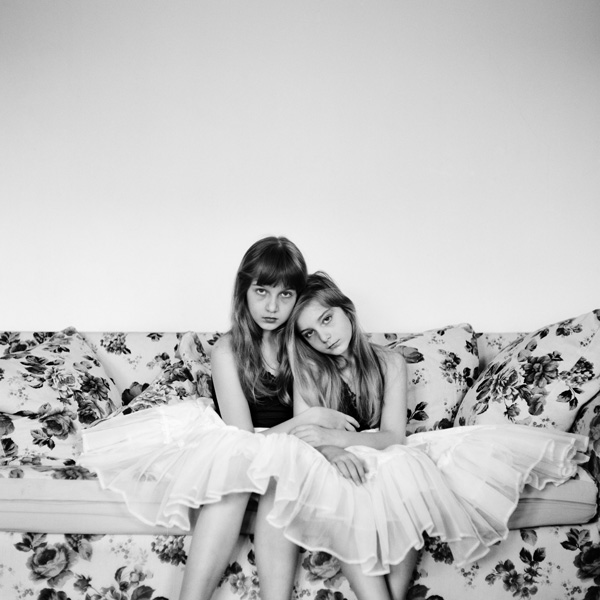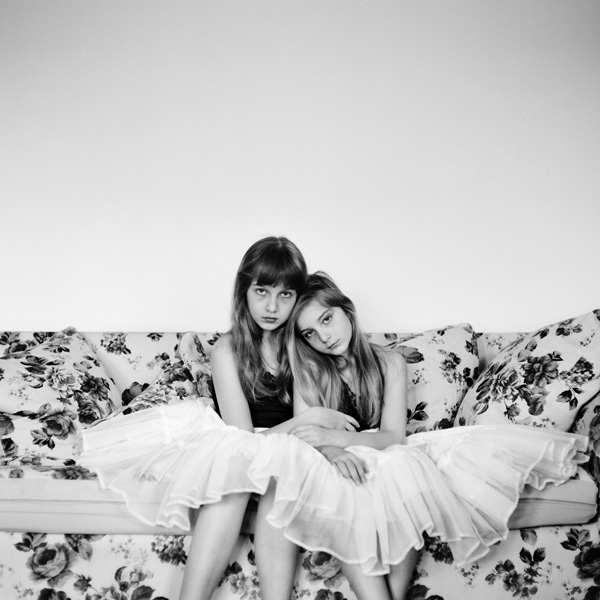Nelli Palomäki portraits exude an aura of nostalgia, creating the impression that they belong in a past century, while almost always seem timeless and focused on the subject. Following many solo and group exhibitions, her first book “Breathing the same air”, which will include children and teenage portraits that she has previously photographed, is expected in a couple of months. The Finnish photographer talks to OZON Raw about her work, her latest exhibition “Sons of Nakhimov” in London, as well as the relationship between herself and her objects.
Your most recent exhibition, “Sons of Nakhimov”, in London, demonstrates photos of St. Petersburg’s Nakhimov Naval Academy. Compared to your previous experience, how would you describe this last one?
The whole project was truly fascinating to me. I still wish I could carry on with it some day and watch the students grow up. Actually, the process of doing the portraits was much more important than the final result. I even started to question my work as a photographer during my visits to St. Petersburg. Sometimes just being there was enough; a portrait was only a small stain of our meeting. There’s a certain responsibility in this work. Building trust with the subject is much more important to me than “stealing” their images.
This is the first time we exhibit these portraits in the UK. The Wapping Project Bankside Gallery is a great place; the huge windows give a certain feeling of natural light. This worked for these portraits, since they were all shot using natural window light.
You said that the portraits of the students you took for “Sons of Nakhimov” signify the way you remember them and you wondered “how they remember you”. How would you want to be remembered by?
This is how I feel about my work in general. What I meant was that if you do a portrait of a stranger, this is the only way you will remember them. In a way, this makes it absolute – this is you. For me, the moment of taking the photo is very important. It should be intense, awkward, fragile and quiet. I’m very nervous while taking the picture. I guess this is a part of my work and what makes the portraits come out the way they do. I can’t say that I would like to be remembered in a certain way, but I do wonder how people remember me. Maybe they noticed some of my weaknesses; maybe they were just as scared as I was.
How would you describe yourself as a photographer?
I don’t carry my camera with me, so I’m not a typical photographer at all. This is something I happen to do, but it doesn’t control my life. I’m more fascinated meeting new people, having strange experiences and conversations with them, living my life full. Photography is a part of my life, but it’s not my whole life.
Why did you choose to focus on portrait photography?
Strangers always fascinated me; meeting new people is something that I always loved. But I actually started working this way, because I had a panic disorder when I was younger. I still do, but I can handle it better now. It wasn’t easy to spend this intense moment with strangers. I kind of started forcing myself to meet new people and spend this quiet time with them. I also love storytelling and you always hear great stories from new people. I don’t talk a lot while doing a portrait. I like the awkwardness of photography. Somehow it shouldn’t be comfortable.
The photos you take are always black and white, although in a previous statement you mentioned: “I had proven myself that things are not that black-and-white.” Can you elaborate on that?
I meant that things are not that simple. This had nothing to do with black and white photography. Because I had a certain attitude when visiting the Russian Naval Academy the first time, I once again realized that things are way more complicated and my way of seeing things is just often too one-dimensional.
You have stated that “each and every photo you have taken is a photograph of you too”. What kind of relationship do you develop with those you choose to photograph?
In order to get something from people, you need to give something from yourself. Even if the relationship between the photographer and the one being photographed is never equal, I try to make it as equal as I can. I can also reveal something from myself; I don’t have to hide behind the role of a photographer. Sometimes you even build strong relationships with the subjects; some of them become your friends, some of them are more distant. I once wrote about this:
“I am now the holder of the portrait, the preserver, forcing us to be bound forever. There lies the power of the portraiture (and the power of the photographer); the miserable thought of permanence. I now have the control to present the photographs, but more than that, I can make them everlasting. They become the enemies of mortality, at the same time devilishly underlining the fact that we all will, without a doubt, die in the end. These captivating proofs of aging and death we keep as treasures, fill them with meanings and memories; they are the most valuable objects in one’s life. Like we worship the photographs of our long gone lovers, as hidden letters filled with sweet and familiar characters, wanting them to be forever trapped with us.
You grew up and studied in Finland. Do you feel that the city you grew up in as well as the current art scene there has affected your work?
Of course. Everything I experience here has affected my work. I’m originally from a small industrial town, a true small Finnish working-class town. It made me tough enough to survive in my life, but also made me very ambitious. I don’t give up easily and I always have many big dreams for the future.
Can you picture yourself in the future? Would you ever attempt to tackle a different genre, other than portrait photography?
I wish to continue my work without thinking too much about the future. I sure hope to be able to continue doing my work, have exhibitions and great opportunities, as well as travel. I’m still very young, so I guess I have many challenges ahead. At the moment, I want to continue with portraiture and I can see myself doing it for many years. But I wouldn’t say “no” to other things. I guess it wouldn’t be such a surprise if I tried something different in the future.
Interview: Alexandra Zografou





